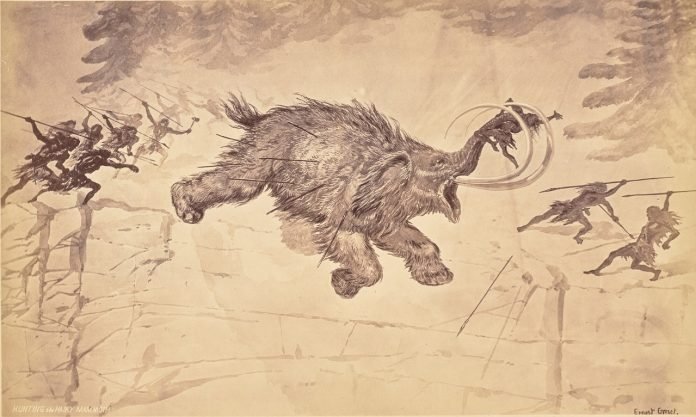
For decades, scientists have debated whether humans or climate change were responsible for the extinction of many large mammals, birds, and reptiles over the past 50,000 years.
Recent research provides strong evidence that humans were the main cause.
Megafauna refers to large animals that weigh at least 45 kilograms. In the last 50,000 years, at least 161 species of large mammals have gone extinct.
The biggest of these, known as megaherbivores (weighing over a ton), were hit the hardest. Fifty thousand years ago, there were 57 species of megaherbivores; today, only 11 remain, and even these have seen drastic declines.
Researchers from the Danish National Research Foundation’s Center for Ecological Dynamics in a Novel Biosphere (ECONOVO) at Aarhus University concluded that many of these species were hunted to extinction by humans.
Their findings were published in the journal Cambridge Prisms: Extinction.
This conclusion is based on a comprehensive review of existing research. The researchers analyzed various factors, including:
- The timing of species extinctions
- The animals’ dietary preferences
- Climate and habitat requirements
- Genetic estimates of past population sizes
- Evidence of human hunting
They also considered broader studies, such as:
- Climate history over the past 1-3 million years
- Vegetation history over the past 1-3 million years
- Evolution and dynamics of fauna over the past 66 million years
- Archaeological data on human expansion and lifestyle, including dietary preferences
While dramatic climate changes during the late Pleistocene (from 130,000 to 11,000 years ago) affected animal and plant populations, significant extinctions were mainly observed among large animals. Previous ice ages and interglacial periods over the past couple of million years did not cause a selective loss of megafauna, suggesting that climate change alone was not the primary driver of these extinctions.
“The large and very selective loss of megafauna over the last 50,000 years is unique over the past 66 million years,” says Professor Jens-Christian Svenning, lead author of the article and head of ECONOVO. “Previous periods of climate change did not lead to large, selective extinctions, which argues against a major role for climate in the megafauna extinctions.”
Archaeological evidence, such as traps designed for large animals and protein residues from spear points, shows that early humans hunted and ate the largest mammals. Large animals are particularly vulnerable to overhunting because they have long gestation periods, produce few offspring, and take many years to reach sexual maturity.
Human hunting of large animals like mammoths, mastodons, and giant sloths was widespread and consistent across the world. These species went extinct at different times and rates, but always after modern humans arrived or, in Africa’s case, after significant cultural advancements among humans.
The loss of large mammals has had profound ecological consequences. Large animals play a central role in ecosystems by influencing vegetation structure, seed dispersal, and nutrient cycling. Their disappearance has led to significant changes in ecosystem structures and functions.
The researchers emphasize the need for active conservation and restoration efforts. By reintroducing large mammals, we can help restore ecological balances and support biodiversity, which evolved in ecosystems rich in megafauna.
“Our results highlight the need for active conservation and restoration efforts,” says Svenning. “By reintroducing large mammals, we can help restore ecological balances and support biodiversity.”
In summary, while climate change did affect animal populations, human hunting played a more significant role in the extinction of large mammals. Understanding this can help us take steps to preserve and restore the natural balance in our ecosystems.
Source: Aarhus University.



